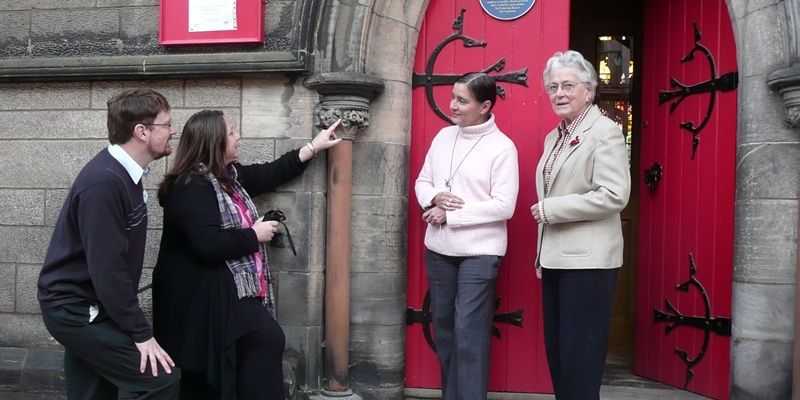A small group of volunteers have embarked on the mammoth task of ensuring Scotland’s churches, which are closing faster than ever, are preserved in history.
Based in a tiny office in the heart of Fife, Scottish Church Heritage Research is busy cataloguing every church site in the country before important information is lost for good.
The charity has built up a database of over 10,000 churches, including those still in existence and many which have long since gone. Members are now involved in taking photographs of the outside and interiors of places of worship for publication on their website (link).
It is hoped that ultimately the information can be used as a teaching resource in schools across the nation and steps are being taken to produce an educational package.
The project was started in 1988 by a small committee of an organisation known as Archaeology Scotland now called the Council for Scottish Archaeology (CSA).
Headed by archaeologist Edwina Proudfoot, the committee secured a £50,000 grant and spent three years drawing up a list of 10,282 churches ranging from archaeological sites to new buildings.
The work then stalled until 1998 when Mrs Proudfoot received a phone call from the new director of the Council for Scottish Archaeology asking what was to happen to the files.
”There were many, many files boxes and boxes of them and he gathered them all together and delivered them to my house in St Andrews,” Mrs Proudfoot said.
”I actually didn’t know what to do with it at that stage but I decided to carry on with the programme and add more information when I had the chance.”
Then the CSA announced it was closing down the committee, prompting Mrs Proudfoot, a former lecturer at St Andrews University, to set up a new organisation to carry on the work.
Its first task was to secure funding from Europe to allow an army of volunteers to photograph church exteriors for a website. With the support of ministers, many interiors have also been captured.
The group moved into its office in Cupar three years ago and a grant from Historic Scotland allowed it to recruit Jonathan Dowling, a full-time employee tasked with recording information on churches in Angus, Aberdeen and Moray.
So far most of Fife has been covered and, thanks to Mr Dowling going out twice a week, much of Angus is also documented, with southern Aberdeenshire now in hand.
”The primary thing is to get a record,” Mrs Proudfoot said. ”Churches are being closed at a phenomenal rate and when they are closed everything is removed from them and the buildings are left empty.
”Our record will be the only historical record of what the churches were like at that time. We’re the only ones trying to do them all.”
She added: ”This is an archaeological approach to historical research and I’m not involved in the religious side of the buildings at all.”
The project is expected to take several years, although the three-year funding will only allow them to catalogue a fraction of Scotland’s churches.
However, the group hope they will be alerted if a church is about to close so they can capture it first.
Mrs Proudfoot is particularly interested in artefacts made for churches by members of the community and pointed to the recently-closed Dunnichen Church in Angus, where fine wall hangings made by the congregation were photographed and documented before it shut.
”The idea is to get all the information in,” she said. ”We’re trying to make it an educational project because there is not much point in gathering all this information if nobody knows about it.”Find out more at www.scottishchurches.org.uk
